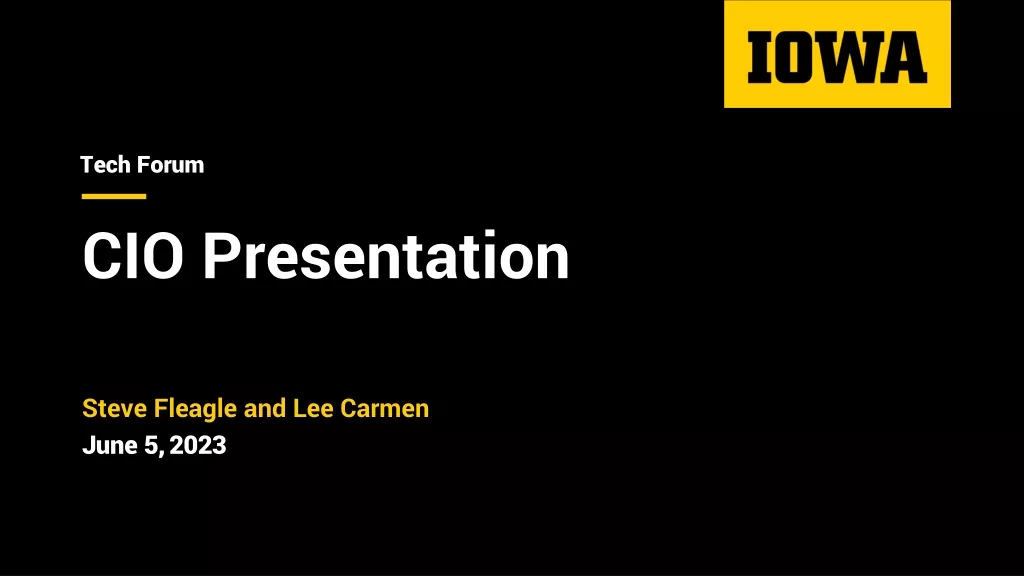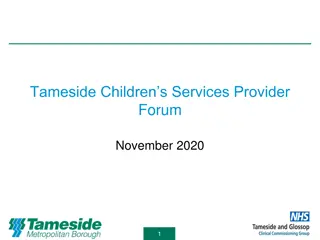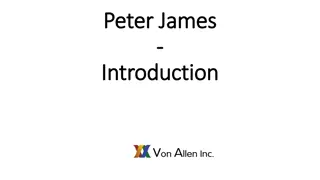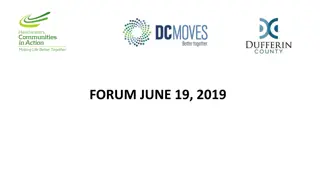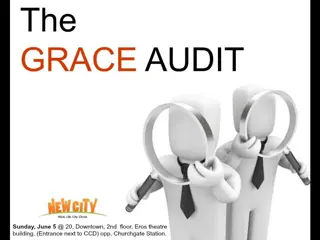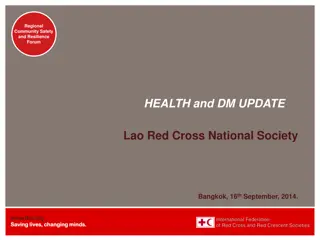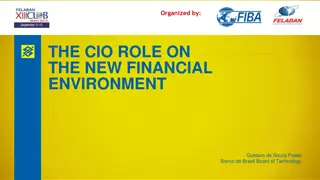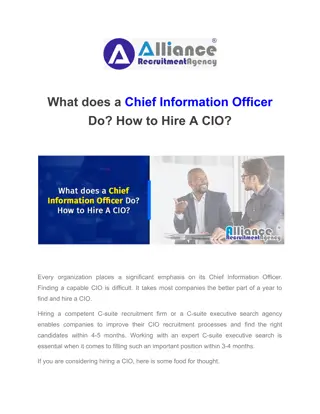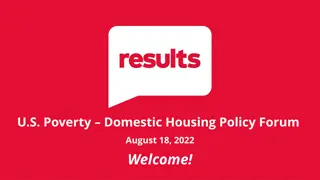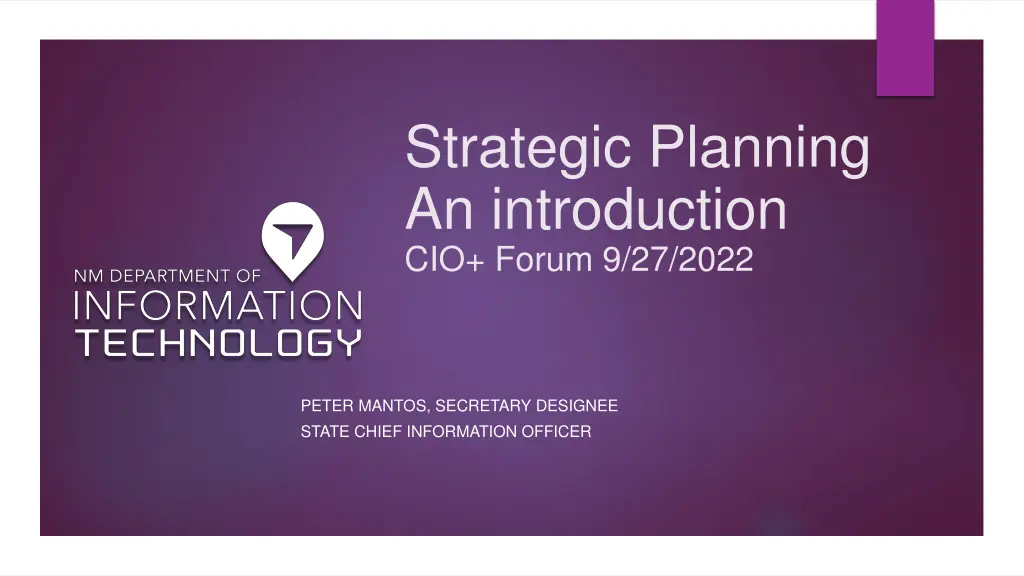
Effective Strategic Planning for CIOs
Explore the essentials of strategic planning for Chief Information Officers (CIOs), including setting SMART goals, conducting environmental scans, internal analysis, and defining strategic direction. Learn to identify opportunities, recognize threats, and leverage strengths to achieve organizational objectives effectively.
Download Presentation

Please find below an Image/Link to download the presentation.
The content on the website is provided AS IS for your information and personal use only. It may not be sold, licensed, or shared on other websites without obtaining consent from the author. If you encounter any issues during the download, it is possible that the publisher has removed the file from their server.
You are allowed to download the files provided on this website for personal or commercial use, subject to the condition that they are used lawfully. All files are the property of their respective owners.
The content on the website is provided AS IS for your information and personal use only. It may not be sold, licensed, or shared on other websites without obtaining consent from the author.
E N D
Presentation Transcript
Strategic Planning An introduction CIO+ Forum 9/27/2022 PETER MANTOS, SECRETARY DESIGNEE STATE CHIEF INFORMATION OFFICER
2 What is a Strategy Not Operational relating to the routine functioning and activities of a business or organization. Not even tactical individual steps and actions to reach a strategic goal Not a Goal A measurable objective or outcome (within a specific time) Definition (Oxford) a plan of action or policy designed to achieve a major or overall aim A general direction
3 In order to strategize: Know where you want to be (the vision) Know what is possible (feasibility) Seize the day (recognize opportunities) Set S.M.A.R.T Goals (objectives / aims) Know where you are (in order to plot the direction to the goal) Recognize obstacles (threats and weaknesses) Exploit your (competitive or comparative) strengths
4 S.M.A.R.T. Goals Specific Measurable Achievable Relevant (to your mission) Timely
5 The Seven Steps (performance.gov) Step 1: Environmental Scan Step 2: Internal Analysis Step 3: Strategic Direction Step 4: Develop Goals and Objectives Step 5: Define Metrics, Set Timelines, and Track Progress Step 6: Write and Publish a Strategic Plan Step 7: Plan for Implementation and the Future
6 Scan the Environment You are the Leader ( Chief ) in I.T. People expect you to know what is coming You have to stay informed Read (ACM, HBR, etc.) Network (peers, seminars, workshops) The only constant is change Is it an Opportunity (a ray of light from the darkness)? Is it a Threat (an oncoming freight train)?
7 Internal Analysis No, not an Xray or endoscopy Know thyself S.W.O.T. Analysis Strengths Weaknesses Opportunities Threats
8 Strategic Direction Be Bold You can be anything you want to be Develop a vision of the future Idealistic High-impact Three Choices Stay the same (cheaper, better, faster, less risky) Do something more (of the same) Do something important and relevant
9 Develop Goals and Objectives Focus Cannot do everything well Collaborative goals People are more likely to achieve goals when they help set them Embrace failure If you don t fail now and then, you ain t trying hard enough Failure is a necessary learning step Be S.M.A.R.T. about what you pick
10 Use Metrics, Timelines, and Track them Metrics If you don t measure, you can t improve Adopt customer s metrics as your own Look for benchmarks (other agencies, other states, private sector) Establish Controls (high and low limits) Set timelines Fast nickel versus slow dime Return on Investment is time sensitive Track Progress Be accountable to each other
11 Write and publish a strategic plan Documentation is institutional memory What did we say? What did we mean? A common baseline Visibility means accountability Trace the plan to Yearly, Quarterly, Monthly, Weekly action What will I do TODAY to reach my long-term vision? Review and update Things change. Change with them.
12 Plan for implementation and the future Too much to do Operational pressures Staffing challenges Plan to fail or Fail to plan Select Key Projects Strategies leads to projects that support them Treat projects like projects Whole nother topic PMI, EPMO, PMBOK,
13 NM State Strategic Planning Is (unfortunately) not always the same as described It is a specific (compulsory) process 1 year, 3-year, 5-year Includes (usually financial) performance metrics Often precludes critical success metrics K.P.I. Key performance indicators
14 I.T. as a Strategy Customer perceptions of I.T. Necessary Evil a commodity Big Black Box - Magic Costs too much Doesn t do enough Hard to use A very valuable asset Use I.T. Strategically Take a seat at the Agency leadership Offer vision and leadership Deliver


